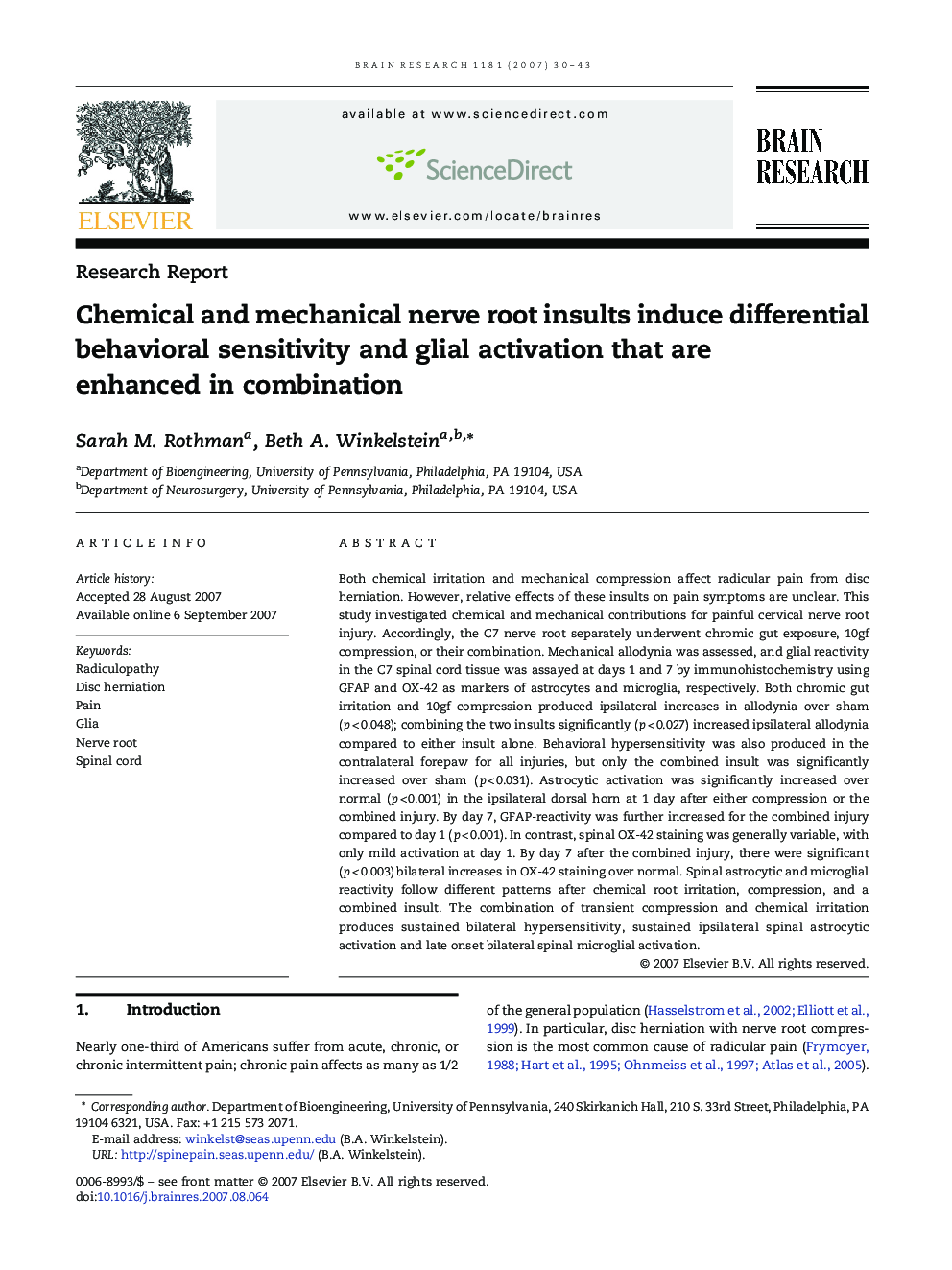| کد مقاله | کد نشریه | سال انتشار | مقاله انگلیسی | نسخه تمام متن |
|---|---|---|---|---|
| 4330406 | 1614258 | 2007 | 14 صفحه PDF | دانلود رایگان |

Both chemical irritation and mechanical compression affect radicular pain from disc herniation. However, relative effects of these insults on pain symptoms are unclear. This study investigated chemical and mechanical contributions for painful cervical nerve root injury. Accordingly, the C7 nerve root separately underwent chromic gut exposure, 10gf compression, or their combination. Mechanical allodynia was assessed, and glial reactivity in the C7 spinal cord tissue was assayed at days 1 and 7 by immunohistochemistry using GFAP and OX-42 as markers of astrocytes and microglia, respectively. Both chromic gut irritation and 10gf compression produced ipsilateral increases in allodynia over sham (p < 0.048); combining the two insults significantly (p < 0.027) increased ipsilateral allodynia compared to either insult alone. Behavioral hypersensitivity was also produced in the contralateral forepaw for all injuries, but only the combined insult was significantly increased over sham (p < 0.031). Astrocytic activation was significantly increased over normal (p < 0.001) in the ipsilateral dorsal horn at 1 day after either compression or the combined injury. By day 7, GFAP-reactivity was further increased for the combined injury compared to day 1 (p < 0.001). In contrast, spinal OX-42 staining was generally variable, with only mild activation at day 1. By day 7 after the combined injury, there were significant (p < 0.003) bilateral increases in OX-42 staining over normal. Spinal astrocytic and microglial reactivity follow different patterns after chemical root irritation, compression, and a combined insult. The combination of transient compression and chemical irritation produces sustained bilateral hypersensitivity, sustained ipsilateral spinal astrocytic activation and late onset bilateral spinal microglial activation.
Journal: Brain Research - Volume 1181, 21 November 2007, Pages 30–43